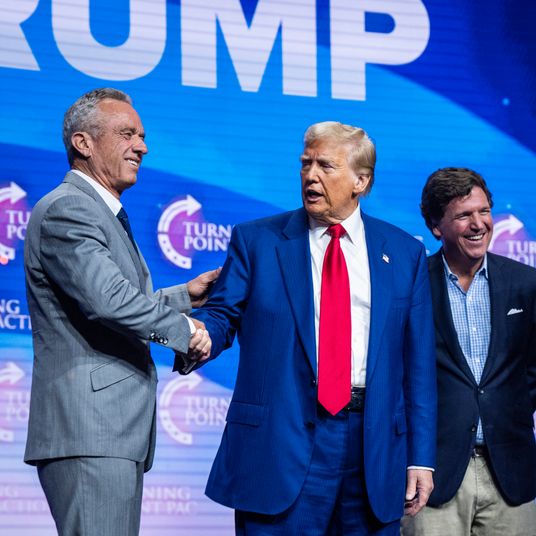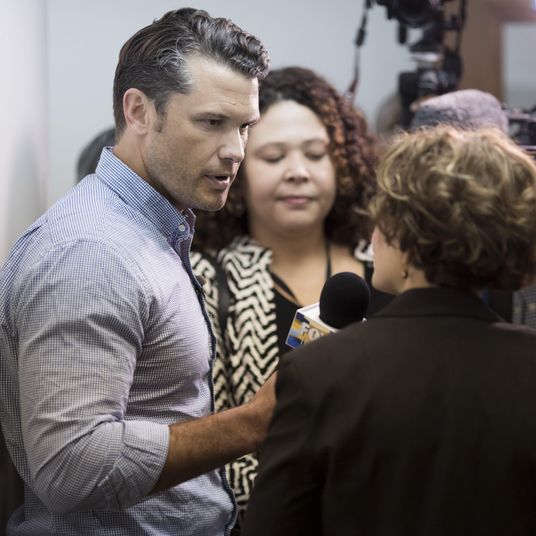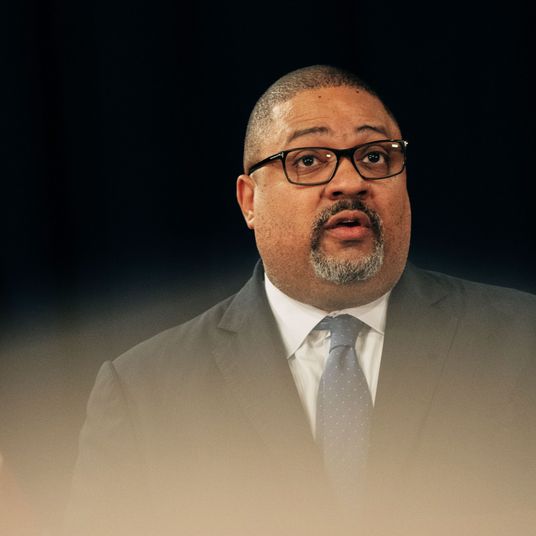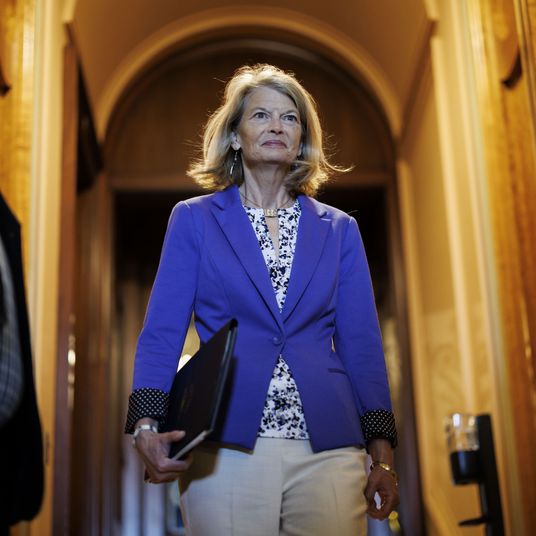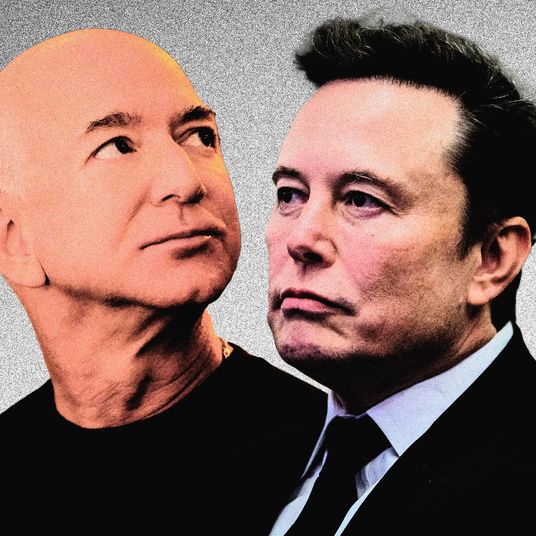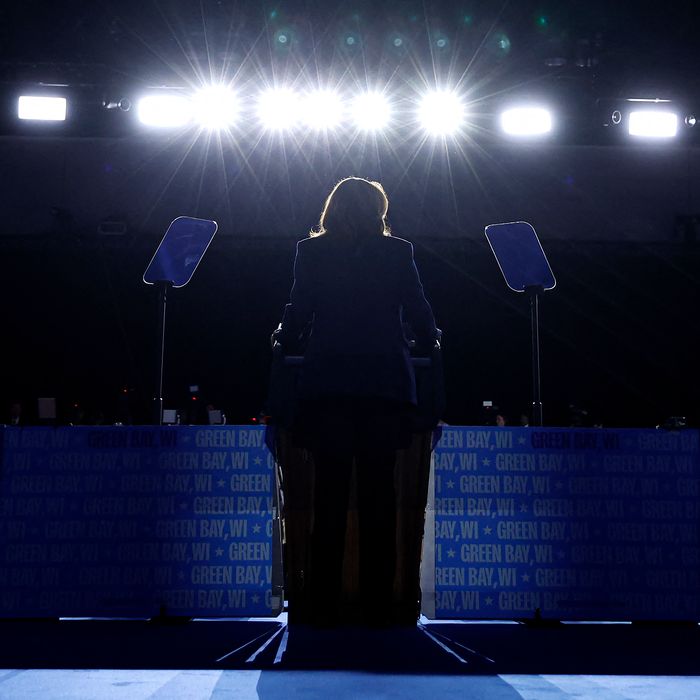
This article was featured in One Great Story, New York’s reading recommendation newsletter. Sign up here to get it nightly.
So who leads the Democrats now?
At one level, everyone from the distraught White House staffers to the furious governors to the scared swing-state city councilmembers knows it’s a ridiculous question. It was in 2016 as well, when it became one of Washington’s debates of the season. Then, as now, the answer is that opposition parties don’t always need singular leaders. Eight years ago, the majority view was that Democrats could rely on Chuck Schumer, Nancy Pelosi, and a collection of Barack Obama’s former aides and allies to set the party’s immediate direction. Even as they painfully debated big-picture questions about Hillary Clinton’s failures against Donald Trump and the lessons of Bernie Sanders’s primary challenge (and launched bitter internal proxy wars in Washington and around the country to relitigate that fight), Democrats’ short-term organizing principle was to resist, then defeat, Trump. That was a grave necessity but also easy to focus on because many in the party regarded 2016 as a fluke. Clinton had won the popular vote, after all.
Now that framework is gone. In advance of Trump’s return to power and in the wake of a national rebuke of Joe Biden and Kamala Harris, Democrats now face much bigger questions about their future — and their first real leadership vacuum in two decades.
No one should have been surprised by the first round of Democratic blame-gaming in the hours after Trump’s election victory became official. There were the factions arguing that it’s self-evident the party should swerve hard toward their preferred ideology (Sanders on Democrats’ left, Richie Torres to his right). There were the reputation protectors and score settlers, the most raw of whom are within and around a White House that suddenly includes visible Biden-vs.-Harris fault lines. And there are those who think Democrats just need to talk differently (one very senior pollster told me her candidates just need to sound “more populist” on everything, and others are studying John Fetterman’s recent appearance on Joe Rogan’s podcast for hints of how other Democrats can communicate with his audience). They’re about even in number with the one-quick-fix types, who are identifying policy 180s — on Israel or trans rights, for example — for Democrats to expand their appeal, no matter what their most fervent supporters may think.
All of this would likely have happened to some lesser degree if it were President-elect Harris now considering how to build her Cabinet in order to steer the direction of the new administration. Yet there’s already an underlying consensus across the party that these first squabbles are all just fine as a short-term coping mechanism but that the real work of diagnosis and soul-searching about both its own failures and Trump’s significant inroads into its base will take months, if not years. Some of this will be formal, conducted by the party committees and data firms and by the super-PACs currently getting incoming from furious donors. In the meantime, there will be casual recriminations against Biden and Harris specifically; already, some people close to Biden’s initial operation have wondered aloud how he got away with refusing to run polls to understand his own image before launching a campaign in 2023, while others around Harris have questioned how her advisers meshed with Biden’s loyalists when the campaign turned over and how some of the people who knew her best in California were shut out. Most are convinced that a real deep dive into the party’s more fundamental shortcomings in voters’ eyes will be necessary before they map a coherent and aggressive path forward for themselves. For now, as one top strategist told me this week, they are “licking the wounds” as they contemplate “diagnosing the patient.”
In this way, the mood is more in line with 2004-style desperation and introspection than 2016-style fury. It will likely continue to be, even if the party can somehow agree about whether this result was more a rejection of Biden and the inflation he oversaw or part of a more profound and global anti-incumbent mood. It’s why even if Democrats largely agreed with Elizabeth Warren’s postelection message about the importance of vigilance in Trump’s return, they greeted her particular warning that Republicans were relying on them to “point fingers at each other” with a collective shrug. Now is, in fact, the time for finger-pointing.
But the biggest difference between now and 2016 is the lack of clarity, or even initial ideas, about whom the party can or should turn to for leadership and a vision.
Schumer, 73, will continue to lead Senate Democrats, but they are diminished, as is the party’s sense of his tactical prowess. Pelosi is 84, and Hakeem Jeffries may still become Speaker of the House, but that remains uncertain at best, as do the priorities of his caucus. Jaime Harrison — whose Democratic National Committee has operated as a wing of Biden’s White House anyway — will soon step aside, and no one is yet scrambling for advice about the party’s future from Harris or her confidants, let alone Biden or his. (Ask Jimmy Carter, Al Gore, John Kerry, or Clinton how the party tends to treat its losers.) And while a handful of Obama advisers kept important positions of power after Trump’s first win, such a dynamic is highly unlikely this time. In 2017, as Trump was being inaugurated, many Democratic donors were gathered in south Florida to hear from aspirants to lead the DNC and to plot resistance campaigns. The two senior operatives tapped to debate the best approach to Trump were Ron Klain and Rahm Emanuel; neither is likely to be first in line for such a role this time. Or take the example of Jen O’Malley Dillon. A former Obama staffer, she helped run the DNC’s unity process after 2016, then ran both Biden campaigns, then Harris’s. She may well remain respected by professional Democrats, who broadly like her personally, but she is unlikely to play a central part in steering the coming reckoning.
So who, exactly, rises to shape the debate this time? Much of the answer will likely be determined organically, in local and state-level races and in battles on the Hill and in statehouses, rather than in donor-organized conference rooms like the ones that filled up in the wake of Clinton’s loss. New faces will emerge in Washington, and Democrats will look to the states for examples of governance and campaigns that appeal to diverse majorities. (Colorado, a rare bright spot for Democrats this week under the leadership of Governor Jared Polis, is already getting a fresh look from some who think his economic messaging may hold lessons for the rest of the party, as his COVID policies did.)
And though it’s tempting to read the vacuum as an opening for the next presidential race, 2028 is far too distant, and the future under Trump is far too uncertain, to treat as the same matter the party’s identity crisis and the campaign to be its next standard-bearer. The politicians already being mentioned as possible next presidential candidates — Gretchen Whitmer, Pete Buttigieg, Gavin Newsom, Josh Shapiro, Wes Moore, Alexandria Ocasio-Cortez, Cory Booker, J.B. Pritzker, and so on — may choose to offer their own diagnoses and ways for Democrats to win young men, say, or Latinos. In the hours after Trump’s win, each spoke out to reassure their followers they would keep up the good fight. But the question of who views the coming months as a grim opportunity to cut a distinct path ahead is a separate one from a campaign that’s still four years off, against an uncertain opponent, in an environment that’s impossible to predict. (Newsom, for one, on Thursday called a special legislative session in California to prepare for Trump’s return.)
What’s already clear is that current Democratic elected officials and power players understand that the usual mechanisms of determining their future are less immediately important than they once believed. The morning after Trump’s first election, I rode an Amtrak train from Clinton’s Election Night party at the Javits Center back to my home in Washington. All ride long, I was inundated with texts and calls from pols trying to work out who should run the DNC and who should fight the already-brewing war between Clinton loyalists and Sanders supporters. They figured the party’s central committee would be the locus of its power and rebuilding, and the ensuing campaign between Obama-and-Clinton ally Tom Perez and Sanders surrogate Keith Ellison was treated as an existential one.
Last week, as I rode in the opposite direction from Harris’s party at Howard University on Wednesday morning, not one such text came in. It’s not that Democrats are now short on ideas, factions, hot takes, or indignation. It’s that not one of them now believes the big questions about the party’s future will be answered in the race to be the next DNC chair. Or, really, that those questions are answerable at any point in the next few months at all. They weren’t after Kerry lost in 2004, when many Democrats sank into desperation about whether their party would ever again be nationally viable. Then, though, it still took less than a year for them to learn that they could rediscover an identity in rallying to oppose the president and that a moribund party was not a hopeless one. By the end of 2005, they were empowered by defending Social Security from Bush’s overreach. The next year, they took control of Capitol Hill. And you may recall what happened in 2008.















